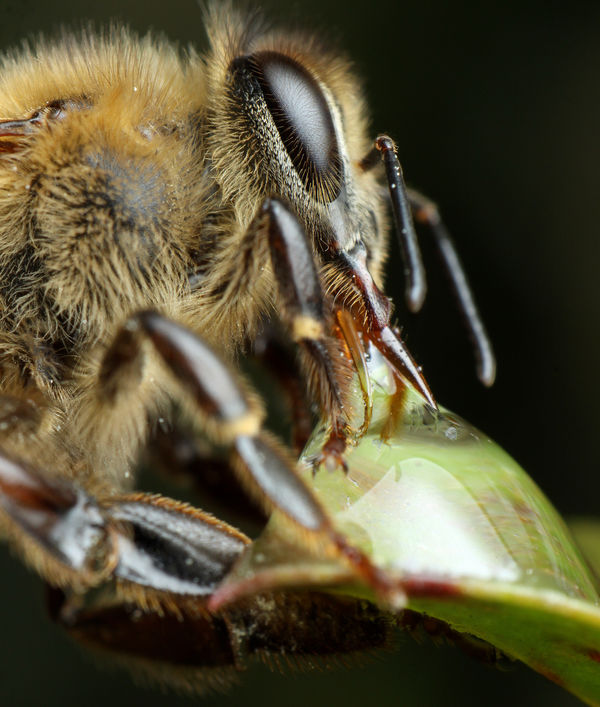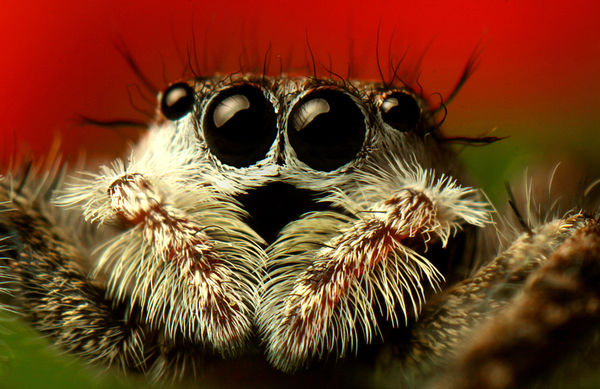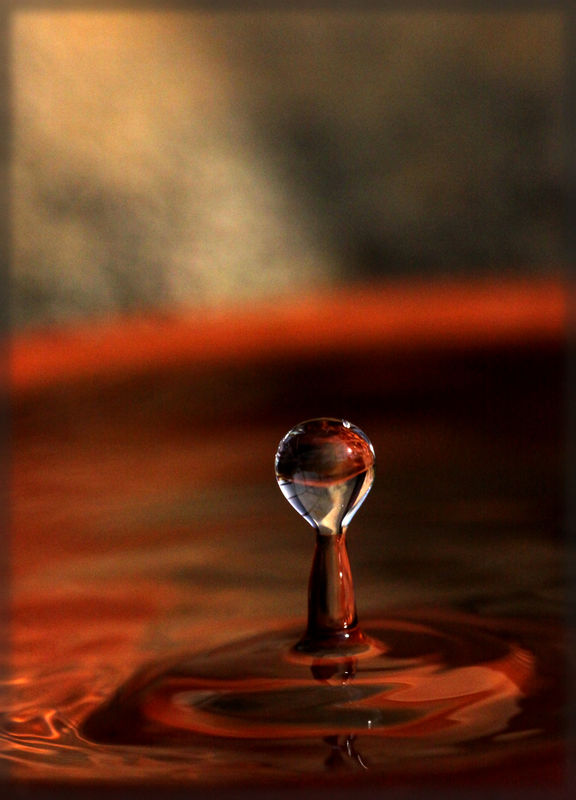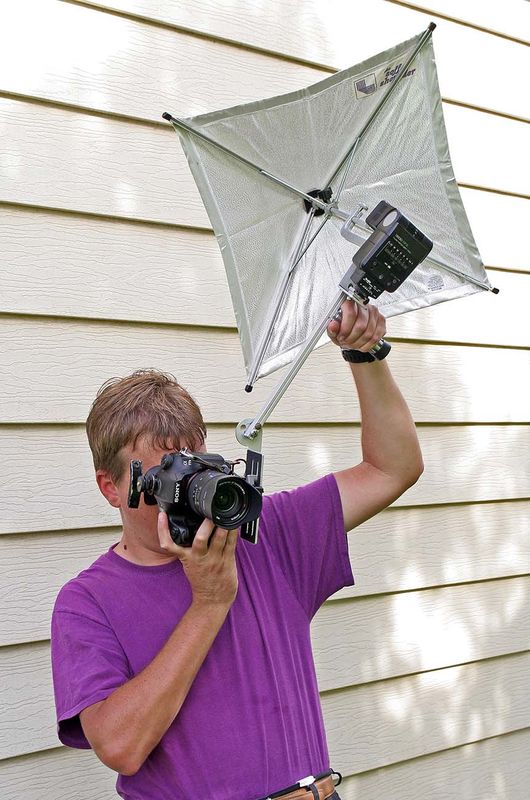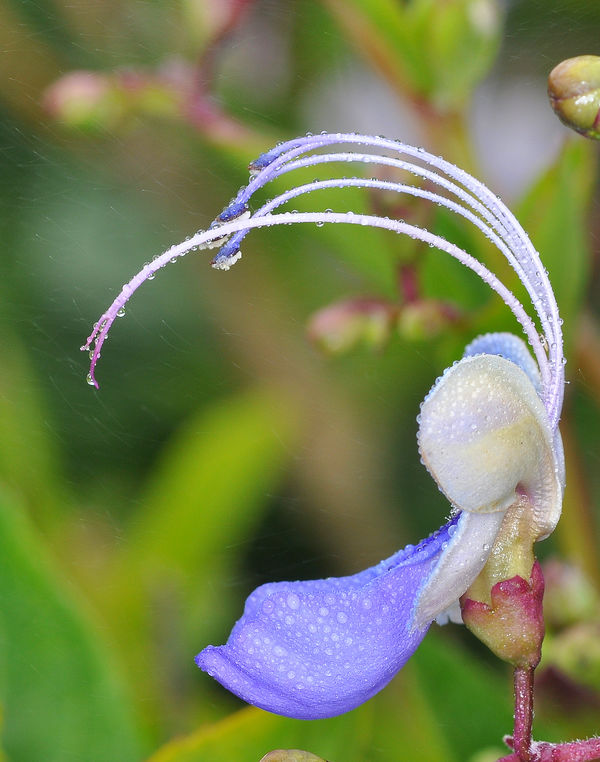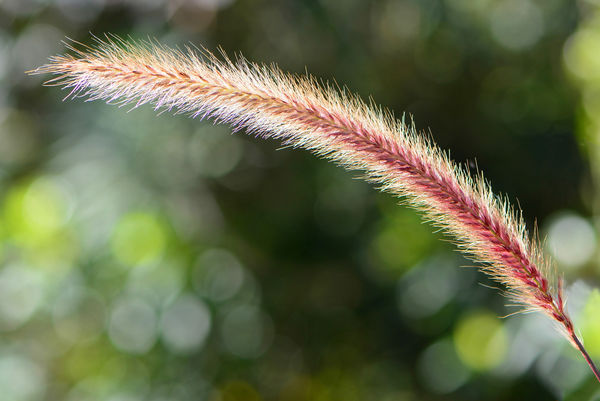Bounced light for Macro?
Apr 18, 2019 10:30:17 #
I have never done this but was reading an article about shaping light in Macro. I shoot handheld and have always used a homemade soft box for my lighting source and have often been disappointed in darkened backgrounds because of the flash required to illuminate the subject does not reach the background with the same light intensity.
Do any of you guys use reflectors and bounced light in your macro and if so how is that working for you? Below is an example of the type image that I have been disappointed with, sometimes what makes a macro shot great is the wonderful backgrounds that are created by the extreme out of focus area behind your subject.
Those who use this technique are welcome make comments and post examples in this thread.
Do any of you guys use reflectors and bounced light in your macro and if so how is that working for you? Below is an example of the type image that I have been disappointed with, sometimes what makes a macro shot great is the wonderful backgrounds that are created by the extreme out of focus area behind your subject.
Those who use this technique are welcome make comments and post examples in this thread.
Apr 18, 2019 10:42:30 #
Apr 18, 2019 10:56:25 #
pmsc70d wrote:
Frankly, I would be thrilled with that shot
Well it took me a few years to get there, that is a old 28mm film lens reversed on a set of M42 tubes... I have lots of them but I also often find that I don't get shots like the ones below when shooting with my lighting setup.
Apr 18, 2019 11:10:33 #
What you are looking for is more depth of light. This will be accomplished if you move your light source further away and increase the power. I do not have an example but I am thinking something like the Soff shoulder bracket with or without umbrella .....
.
.
Apr 18, 2019 11:42:27 #
Lighting is the biggest challenge. It seems pretty clear to me that with close up and macro, the needs for lighting can change pretty dramatically depending on size of subject, distance to the background, shiny-ness, and so on. In a shaded forest the black background is likely to happen under our conditions and that is sometimes a plus and sometimes a problem. i will show an idea about that later.
imagemeister has a good idea here, although I expect that rig would not work on my crop sensor body to record an image from a subject that is a few millimeters across. That spot won't get enough light. But the idea that is contained there is the use of a large concave surface to bounce light, and try to get a lot of it to converge onto the target from different directions.
So consider a flash head close to the subject, but aimed away from the subject, with a light scoop diffuser like this: https://www.amazon.com/Lite-Genius-Lite-scoop-flash-modifier/dp/B007PKCZV0/ref=pd_lpo_sbs_421_t_2?_encoding=UTF8&psc=1&refRID=HH5JJCB259PE68HZBHXH
What is attractive about any of these ideas is that bounce lighting makes it a bit easier to not have a blown out hot spot on the shiny bits.
imagemeister has a good idea here, although I expect that rig would not work on my crop sensor body to record an image from a subject that is a few millimeters across. That spot won't get enough light. But the idea that is contained there is the use of a large concave surface to bounce light, and try to get a lot of it to converge onto the target from different directions.
So consider a flash head close to the subject, but aimed away from the subject, with a light scoop diffuser like this: https://www.amazon.com/Lite-Genius-Lite-scoop-flash-modifier/dp/B007PKCZV0/ref=pd_lpo_sbs_421_t_2?_encoding=UTF8&psc=1&refRID=HH5JJCB259PE68HZBHXH
What is attractive about any of these ideas is that bounce lighting makes it a bit easier to not have a blown out hot spot on the shiny bits.
Apr 18, 2019 11:55:54 #
Just as DOF increases with distance so does DOL ( depth of light)
Apr 18, 2019 12:20:54 #
imagemeister wrote:
Right, but as you can see I generally only shoot extreme macro 3:1 and above, with regular macro 1:1 or lessor magnifications it has not been a problem but with the reversed lens set up I have learned to shoot with my flash head on an articulating arm all the way out to the end of the lens setup. You explained the problem just fine and in fact I have always shot with the lowest power setting on the flash that would provide adequate light on the subject, the shorter the flash period the better it freezes motion, I have shot handheld 3:1 macro at 160th using that method, but like I said, I lose background.Just as DOF increases with distance so does DOL ( depth of light)
Apr 18, 2019 13:38:46 #
amfoto1
Loc: San Jose, Calif. USA
I recall reading an article some years ago about this exact subject.... Macro flash is great to freeze movement (both subject and camera/lens). However, in most situations it makes the background "go dark".
I think the author of the article was Tim Fitzharris and he just got tired of every macro shot he took having a dark background. His solution was to stop using flash and start using a tripod. Shoot everything by ambient light and those backgrounds will not go dark in most situations. Of course this often means longer exposures and will limit the subjects you can shoot... bugs and other little critters need to be "chilled" or otherwise immobilized... and you might need to look for subjects in brighter lighting conditions.
"Bounce" cards and reflectors can be used with ambient light or flash. It's easy to make some from poster board. You might experiment with different types.... a white bounce card gives one type of lighting.... a silver finish can give an image a little "punch".... a gold metallic makes for a warmed shot... etc. I've used some reflectors that were a mix of silver and gold metallic, for slight warming.
Multiple flash would be another way... Add a second flash to illuminate the background. With today's "smart" flashes and wireless tech, that's a lot easier than it was in the past.
I think the author of the article was Tim Fitzharris and he just got tired of every macro shot he took having a dark background. His solution was to stop using flash and start using a tripod. Shoot everything by ambient light and those backgrounds will not go dark in most situations. Of course this often means longer exposures and will limit the subjects you can shoot... bugs and other little critters need to be "chilled" or otherwise immobilized... and you might need to look for subjects in brighter lighting conditions.
"Bounce" cards and reflectors can be used with ambient light or flash. It's easy to make some from poster board. You might experiment with different types.... a white bounce card gives one type of lighting.... a silver finish can give an image a little "punch".... a gold metallic makes for a warmed shot... etc. I've used some reflectors that were a mix of silver and gold metallic, for slight warming.
Multiple flash would be another way... Add a second flash to illuminate the background. With today's "smart" flashes and wireless tech, that's a lot easier than it was in the past.
Apr 18, 2019 14:00:32 #
amfoto1 wrote:
Thanks Alan, in a studio type environment a second flash would be easy, I am already using a wireless transmitter and I think that I have 4 receivers to go along with my 4 Canon flash heads. Problem is that live bee was shot in the backyard in a natural environment.Multiple flash would be another way... Add a second flash to illuminate the background. With today's "smart" flashes and wireless tech, that's a lot easier than it was in the past.
Apr 18, 2019 14:24:29 #
Needed "freeze" lighting is the problem, inherent with insect macro. When shooting small flowers in the field, I use the same speedlight power setting for subject exposure, but increase my shutter duration for proper background exposure. In other cases, I have used speedlight for front fill lighting, and opened aperture for proper background exposure.
Example #1 = Hand-held at ISO 200, Nikkor 105D macro lens, 1/50-sec at f/16, overcast sky & diffused speedlight. (note the movement of fog particles upper left)
Example #2 = Hand-held at ISO 200, Nikkor 105G macro lens, 1/200-sec at f/4.5, full sun backlighting & diffused speedlight (fill).
Example #1 = Hand-held at ISO 200, Nikkor 105D macro lens, 1/50-sec at f/16, overcast sky & diffused speedlight. (note the movement of fog particles upper left)
Example #2 = Hand-held at ISO 200, Nikkor 105G macro lens, 1/200-sec at f/4.5, full sun backlighting & diffused speedlight (fill).
Apr 18, 2019 16:11:10 #
Nikonian brings up a good settings that can bring in more light from the background.
At times the background just does not want to give us enough light. A slower shutter may not work b/c of movements. A wide aperture may not give the needed depth of field. So an option, if you don't mind a bit of chicanery, is to insert a reflective background just a bit behind the subject. It is of course desirable to make this look like a natural background, so a known trick is to insert a piece of colored paper in the background that has the look that is wanted. You can do a google image search for such backgrounds, and just print them on non-reflective heavy stock paper and carry with you into the field. Or make pictures of foliage (weeds, grass, tree leaves), and blur the heck out of them in PS or whatever. Any one picture would only use a very small part of the background, so a given picture can be used a lot.
Antonio Caseiro is a very gifted photographer who paints his backgrounds in watercolor, and he uses them in the field or in the studio. Here is an example: https://www.flickr.com/photos/themacroshed/46464147134/in/photostream/ He has a number of very clever tricks, and it is worth just perusing his site.
At times the background just does not want to give us enough light. A slower shutter may not work b/c of movements. A wide aperture may not give the needed depth of field. So an option, if you don't mind a bit of chicanery, is to insert a reflective background just a bit behind the subject. It is of course desirable to make this look like a natural background, so a known trick is to insert a piece of colored paper in the background that has the look that is wanted. You can do a google image search for such backgrounds, and just print them on non-reflective heavy stock paper and carry with you into the field. Or make pictures of foliage (weeds, grass, tree leaves), and blur the heck out of them in PS or whatever. Any one picture would only use a very small part of the background, so a given picture can be used a lot.
Antonio Caseiro is a very gifted photographer who paints his backgrounds in watercolor, and he uses them in the field or in the studio. Here is an example: https://www.flickr.com/photos/themacroshed/46464147134/in/photostream/ He has a number of very clever tricks, and it is worth just perusing his site.
Apr 18, 2019 16:15:22 #
Apr 18, 2019 20:12:21 #
Mark Sturtevant wrote:
can't imagine how to make bounce flash work in macro, some make bounce dryer sheets work as diffusion........ . . if you don't mind a bit of chicanery, is to insert a reflective background just a bit behind the subject.
 for difficult situations when shooting the 100mm I too carry old prints of flowers with greenery or just greenery that didn't make the cut, you can print them out of focus so you can hold them closer to the subject I keep small spring steel type clamps on them, they stay in my bicycle gear box,
for difficult situations when shooting the 100mm I too carry old prints of flowers with greenery or just greenery that didn't make the cut, you can print them out of focus so you can hold them closer to the subject I keep small spring steel type clamps on them, they stay in my bicycle gear box,Apr 18, 2019 23:38:24 #
Mark Sturtevant wrote:
I am going to try Caseiro's watercolor idea.Antonio Caseiro is a very gifted photographer who paints his backgrounds in watercolor, and he uses them in the field or in the studio.
His images are amazing, aren't they? The one you linked to is just stunning.
Apr 19, 2019 09:26:29 #
The urge to achieve perfect lighting for macro photography can be maddening (I say this as I sit here in my padded room and straight jacket).
Here's a link to a great instructional video featuring the United States Geological Survey (USGS) group that is photographing and archiving insects for scientific needs and study. He demonstrates the techniques used and provides simple, almost no cost methods, for anyone wanting to venture into micro photography.
http://seeinginmacro.com/usgs-releases-video-interview-macro-photographer-sam-droege/
Here's a link to a great instructional video featuring the United States Geological Survey (USGS) group that is photographing and archiving insects for scientific needs and study. He demonstrates the techniques used and provides simple, almost no cost methods, for anyone wanting to venture into micro photography.
http://seeinginmacro.com/usgs-releases-video-interview-macro-photographer-sam-droege/
If you want to reply, then register here. Registration is free and your account is created instantly, so you can post right away.

